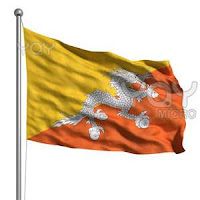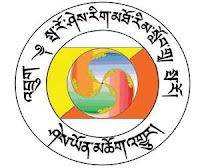A modern educational system was introduced in Bhutan in the 1960s. Prior to that, education was provided only by monasteries. In the interim, more than 340 schools and Institutions of higher education have been established.
The top most Universities in Bhutan are the following
- National Institute of Education, Paro, Bhutan
- National Institute of Education, Samtse, Bhutan
- Royal Bhutan Institute of Technology
Education Western style Ugyen Wangchuck (1907-26) was introduced during the reign of Bhutan. Until the 1950s, private schools, with the exception of Bhutan, Bumthang lobster and the number of students was the only education by means of a Buddhist monastery. In the 1950s without the support of the Government and many private secular schools were established, the Government and several other major Division was founded in the village: backup in the late 1950s, the Government and there are 20-9, but only about 2,500 30 private school children have been registered. Secondary education was available only in India.Nonetheless, private schools, the Government aimed to increase the quality of education. Although some in remote areas, low primary school attendance in the first five year plan for education (1961-66) during the period of development the most important contemporaries, some 108 schools were closed because it works and registered 15 000 students.
 The Director of education appointed in 1961, the central institution in the form of free and universal basic education system and the Organization, provides a modern school, the first five year plan. Since that time, children can attend school in junior classes through the one-or two and then one year starting from kindergarten. At a high level of education corresponding to junior grade 6 through 8, and grades 9 through 11 at the level of high school. The Ministry of education at school level across the country all the Bhutan Scouting promotions to management. 10 quality tests carried out by a school board member from India. In addition, the Ministry of education is responsible for producing textbooks; It was a course schedule and teacher readiness training, and support; of education; Interschool array organization competition; Education programs; Orders for foreign aid and recruiting, testing, and other obligations of the teachers.
The Director of education appointed in 1961, the central institution in the form of free and universal basic education system and the Organization, provides a modern school, the first five year plan. Since that time, children can attend school in junior classes through the one-or two and then one year starting from kindergarten. At a high level of education corresponding to junior grade 6 through 8, and grades 9 through 11 at the level of high school. The Ministry of education at school level across the country all the Bhutan Scouting promotions to management. 10 quality tests carried out by a school board member from India. In addition, the Ministry of education is responsible for producing textbooks; It was a course schedule and teacher readiness training, and support; of education; Interschool array organization competition; Education programs; Orders for foreign aid and recruiting, testing, and other obligations of the teachers.Public School Board established a core curriculum of English, mathematics and language Dzongkha.Although the junior high and high school system in the whole command into 1989, Dzongkha, the language of the English channel and in southern Bhutan, Nepal, with courses required. Students of English literature, sociology, history, geography, General Science, biology, chemistry, physics and religion. The development of curricula is often in the case of historical research from external forces. The majority of Bhutanese history written from the history or the administrative registers and not on the basis of an oral tradition. The United Nations Educational, scientific and Cultural Organization (UNESCO) and the University of London, a project organised by Bhutanese history and culture of four courses and in India, history and political ideas in 6 courses in the world, including the development of curricula 10-module. Basic agriculture, animal husbandry, forestry, etc. were taught subjects of immediate practical applications, too.
In 1988, Bhutan by the system commonly schools, school students and teachers to 1,513 in 150 43,527, give students and 21 junior high school, students and teachers at the school covers 447 4515 11835 248 teachers in September. All students of primary and secondary accounted for 63% of men. The majority of teachers were those level-70%-also for men. In addition, there are 150 students and teachers from the profession, technology, 1761 and special schools in 1988.
Students in undergraduate courses, 1981 58796 went on a student in 1988 38,605 growth and training duties. In 1988, the school-age children the State by around 25% of all schools, by a very small proportion.Registration of the school is the Government establish quotas, although no instance do they come closest to being met in the 1980s: junior high school, only about 8% and a high-school-age children were enrolled in 1988 to less than 3%.
Bhutan is estimated at about 30% of men and women of the UNITED NATIONS development programme (UNDP), 10% in the 1990s, both among the least developed countries with the lowest rank. The other source is 12 to 18 per cent illiteracy rate, low rankings.
Some primary schools and middle and high school in General was the school. In the 1980s, the school ran from December to March this year. In the 1980s, studies, books, stationery, exercise equipment, food, free of charge for all boarding schools, and some schools also offer clothing. The United Nations food and Agriculture Organization of the world food programme, with the help of some of the free primary school in the South.
Higher education in the Arts and crafts Kharbandi Operating Samdrup Jongkhar district, village of Deothang and Royal Bhutan provided by district outside.
useful linkshttp://countrystudies.us/bhutan/29.htm
http://www.nationsencyclopedia.com/Asia-and-Oceania/Bhutan-EDUCATION.html
http://www.education.gov.bt/Edn%20System/Education%20System.html#Growth



